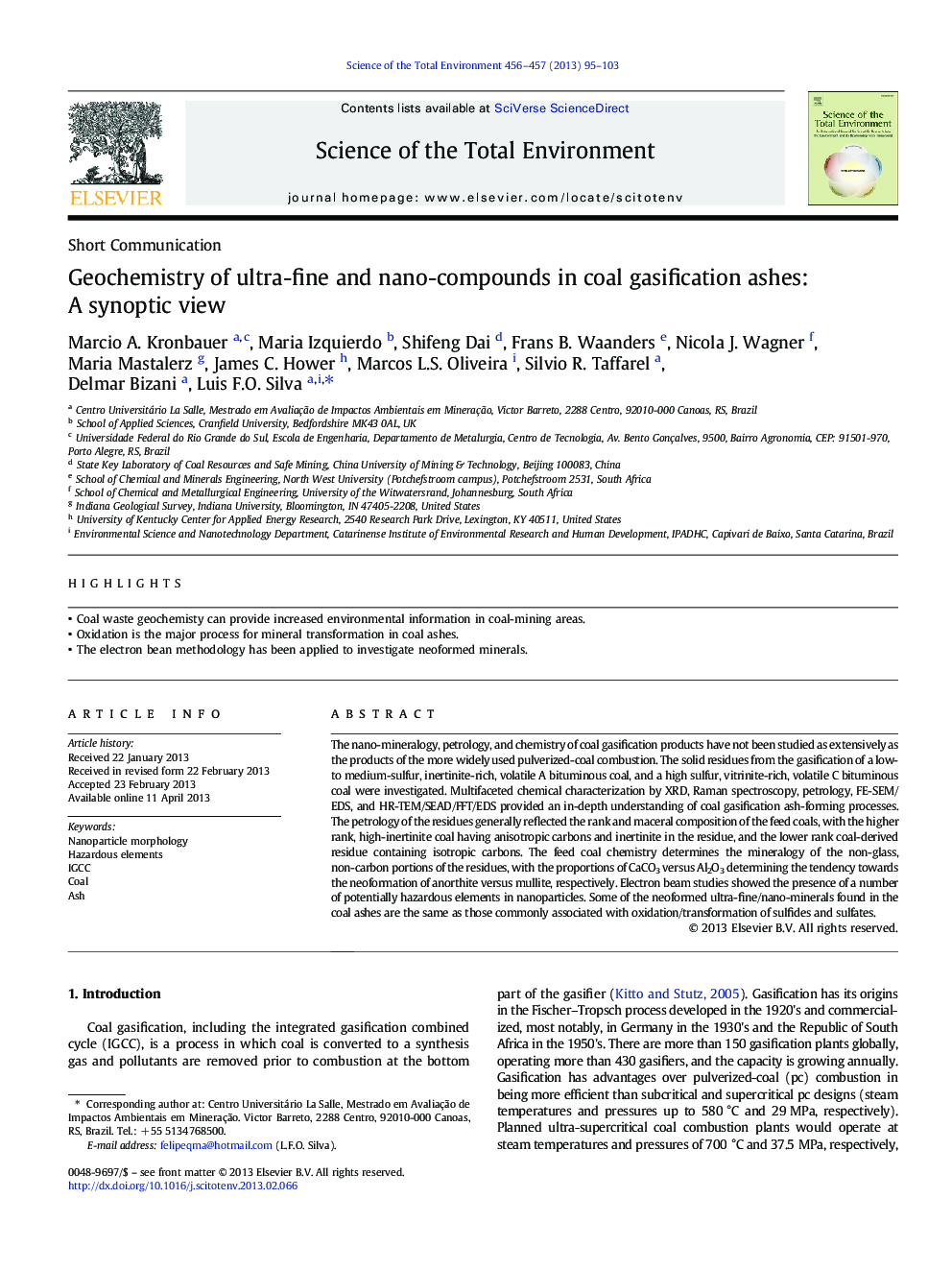| Article ID | Journal | Published Year | Pages | File Type |
|---|---|---|---|---|
| 4428797 | Science of The Total Environment | 2013 | 9 Pages |
•Coal waste geochemisty can provide increased environmental information in coal-mining areas.•Oxidation is the major process for mineral transformation in coal ashes.•The electron bean methodology has been applied to investigate neoformed minerals.
The nano-mineralogy, petrology, and chemistry of coal gasification products have not been studied as extensively as the products of the more widely used pulverized-coal combustion. The solid residues from the gasification of a low- to medium-sulfur, inertinite-rich, volatile A bituminous coal, and a high sulfur, vitrinite-rich, volatile C bituminous coal were investigated. Multifaceted chemical characterization by XRD, Raman spectroscopy, petrology, FE-SEM/EDS, and HR-TEM/SEAD/FFT/EDS provided an in-depth understanding of coal gasification ash-forming processes. The petrology of the residues generally reflected the rank and maceral composition of the feed coals, with the higher rank, high-inertinite coal having anisotropic carbons and inertinite in the residue, and the lower rank coal-derived residue containing isotropic carbons. The feed coal chemistry determines the mineralogy of the non-glass, non-carbon portions of the residues, with the proportions of CaCO3 versus Al2O3 determining the tendency towards the neoformation of anorthite versus mullite, respectively. Electron beam studies showed the presence of a number of potentially hazardous elements in nanoparticles. Some of the neoformed ultra-fine/nano-minerals found in the coal ashes are the same as those commonly associated with oxidation/transformation of sulfides and sulfates.
